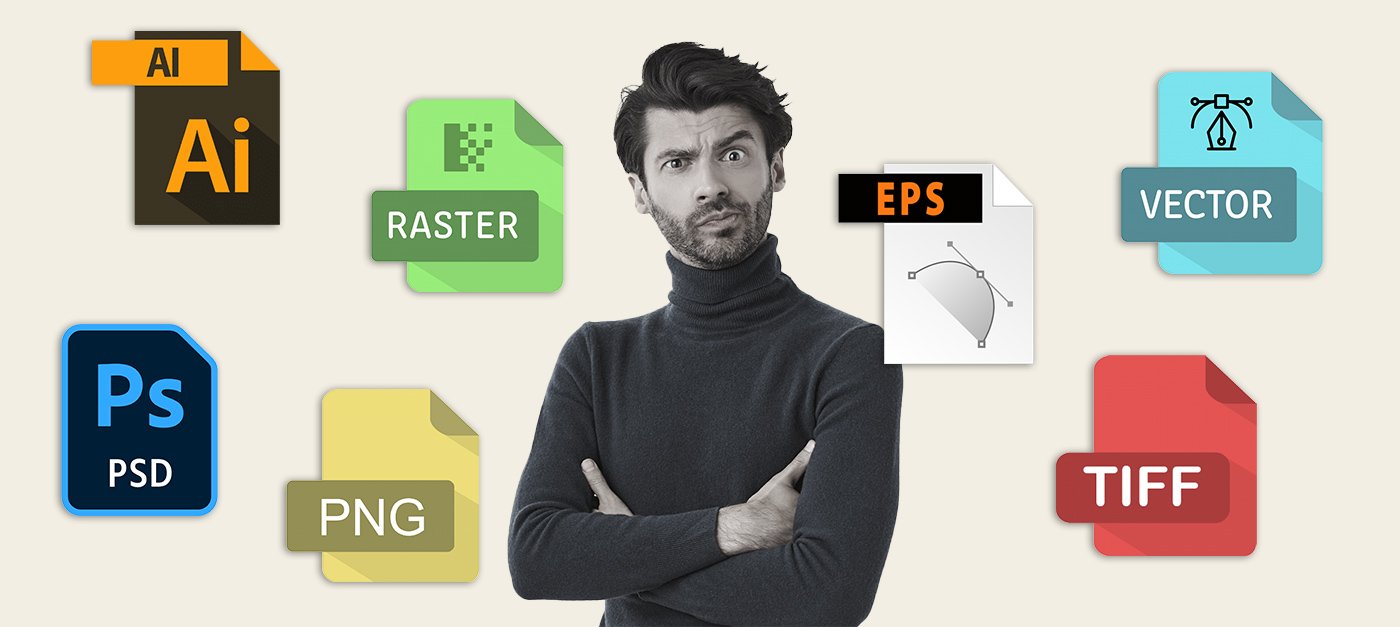What the he%# do all these different file types mean?
A client’s guide to understanding what the different types of files are, and how you can use them.
The world of graphic design can feel like a foreign language at times, filled with technical terms and cryptic abbreviations. One area that often confuses clients is file formats. Understanding the difference between a .pdf and a .psd, for instance, can be crucial for ensuring your project runs smoothly. This guide will break down the most common graphic design file formats, explaining what they are and when you might encounter them.
Understanding Raster vs. Vector: The Building Blocks of Design Files
Before diving into specific formats, there's a fundamental distinction to grasp: raster vs. vector graphics.
Raster Images
Imagine a raster image like a mosaic – it's built from tiny colored squares called pixels. The more pixels, the higher the resolution and sharper the image. However, if you enlarge a raster image, the pixels become visible, causing the image to lose quality (think pixelation).
So it’s very important that your raster images be high enough in resolution to look crisp. A 300 dpi photo printed at 100% is a standard crisp image. However the dpi can be less if it’s oversized image that the viewer isn’t looking at close up.
A typical Raster Image
Zoomed in Raster Image
Vector Images
Vector graphics, on the other hand, use mathematical formulas to define lines, shapes, and colors. This means they can be scaled infinitely without losing quality – perfect for logos, icons, or illustrations that need to be used in various sizes.
A typical Vector Image
Zoomed in Vector Image
Essential File Formats for Everyday Design Needs
Now that you understand the basics, let's explore some popular file formats:
VECTOR FILE FORMATS INCLUDE:
.eps (Encapsulated PostScript): A versatile vector format widely used for exchanging graphics between different design programs. It can contain both vector and raster elements, making it a good choice for complex projects.
.svg (Scalable Vector Graphics): An open-source vector format ideal for web graphics or animations. SVGs are lightweight and can be edited with code, making them a great choice for interactive elements.
.ai (Adobe Illustrator Artwork): The native file format of Adobe Illustrator, a popular vector graphics software. .ai files are perfect for logos, illustrations, and any scalable design elements.
.pdf (Portable Document Format): A universal format that preserves formatting and layout across different devices. PDFs can contain both vector and raster elements, making them ideal for sharing final designs, presentations, or printable documents.
RASTER FILE FORMATS INCLUDE:
.psd (Photoshop Document): The native file format of Adobe Photoshop, a powerful tool for editing raster images. PSD files allow for layered editing, meaning you can work on different parts of the image independently. This is crucial for creating photo manipulations, web graphics, or social media posts.
.png (Portable Network Graphics): A lossless raster format that supports transparency. This makes PNGs ideal for logos with transparent backgrounds or graphics with text overlays on web pages.
.tiff (Tagged Image File Format): A high-quality, lossless format often used for professional photography or printing. TIFF files are large but preserve maximum image detail.
.jpg: Also known as a JPEG, is a common type of image file that uses compression to reduce file size. This makes them great for sharing photos online or storing them on devices without using up too much space. The downside is that some image quality is lost in the compression process.
Choosing the Right Format for Your Project
Knowing when to use each format depends on your project's specific needs. Here's a quick guide:
For logos, icons, and illustrations: Use .ai, .eps, or .svg for ultimate scalability.
For photographs and web graphics: Use .jpg (for photos with minimal editing needs), .png (for graphics with transparency or text overlays), or .psd (for complex photo manipulation).
For print-ready files: Use .tiff or .pdf (ensuring high resolution and proper layout).
For sharing final designs or presentations: Use .pdf (universally compatible and maintains formatting).
Working with Your Designer:
Communication is Key
The best way to ensure you receive the files in the right format is by communicating clearly with your graphic designer. Discuss the intended use of the design (web, print, etc.) and any specific size requirements. Your designer can then advise on the most suitable format and provide the final files accordingly.
By understanding the basic differences between raster and vector formats, and familiarizing yourself with some common file types, you'll be well-equipped to navigate the world of graphic design file formats with confidence. Remember, clear communication with your designer is always key to a successful project!
Contact Lien Design today for a $0 esimate for your next successful project!




